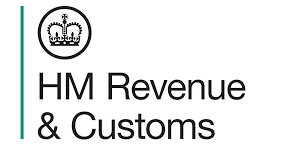HMRC SDLT: Freeports and Investment Zones: No Relief for Non-Qualifying Land Use
SDLTM20225 – Freeports and Investment Zones Relief: Non-Qualifying Land Use
This section outlines when relief is not granted for land use within Freeports and Investment Zones. Relief is denied if the land is used in a non-qualifying manner, such as for residential purposes or held for resale without development. Specific rules apply to alternative finance arrangements, affecting how land is considered for relief eligibility.
- Relief is not given for land used as a dwelling or its garden/grounds.
- Development into residential property disqualifies land from relief.
- Land used to generate rent from dwellings is non-qualifying.
- Land held for resale without development is not eligible for relief.
- Alternative finance arrangements affect how land is assessed for relief.
“`

Read the original guidance here:
HMRC SDLT: Freeports and Investment Zones: No Relief for Non-Qualifying Land Use
Understanding Freeports and Investment Zones Relief: Non-Qualifying Use of Land
Freeports and investment zones are designed to encourage economic activity, but not every use of land in these areas qualifies for tax relief. It is essential to understand what constitutes a non-qualifying use of land to ensure compliance and to benefit from available reliefs.
What is Non-Qualifying Use of Land?
Non-qualifying use refers to specific activities related to land that do not meet the criteria necessary for claiming relief. According to guidance, there are several activities that are categorised as non-qualifying uses:
- Residential Use: When land is used as a dwelling or as the garden or grounds of a dwelling, it does not qualify for relief.
- Residential Development: If the land is being developed or redeveloped for residential properties, this use is also non-qualifying.
- Rental Income: Using the land as a source of rental income, particularly when that income is related to residential use (like dwellings or their gardens), means the use is non-qualifying.
- Resale as Stock: If land is held for resale without any development or redevelopment, it is classified as non-qualifying.
Each of the above non-qualifying uses must be clearly understood by anyone looking to benefit from the relief associated with freeports and investment zones.
Clarifications on Garden and Grounds Use
Any reference to land being used as the garden or grounds of a dwelling includes the use of any buildings or other structures that sit on that land. For instance, if a piece of land surrounds a residential property and is used for activities related to that home, it is considered non-qualifying. This includes not just the main house but any outhouses, sheds, or other structures linked to residential living.
Special Cases: Alternative Finance Arrangements
There are specific circumstances involving alternative finance arrangements where the categorisation of land may differ from the usual rules. In these cases, land owned by a financial institution may be treated differently. Here’s how it works:
- Relevant Person: The financial institution is seen as holding the land on behalf of another party, known as the “relevant person.” This relevant person is the individual or business that has entered the alternative finance arrangement.
- Resale Criteria: For the land to be recognised as being held for resale, it must meet the same criteria as if it were held directly by the relevant person. If the relevant person could treat the land as stock without development or redevelopment, then the financial institution can as well.
This change in perspective is significant as it can influence how land is treated for tax purposes in the context of freeports and investment zones.
Illustrative Examples of Non-Qualifying Uses
To clarify the differences between qualifying and non-qualifying uses, let’s consider some practical examples:
- Example 1: Residential Development – A plot of land is purchased with the intention of building apartments. This use is non-qualifying because it is developing land into residential property.
- Example 2: Rental Properties – A property is rented out to tenants. Since this is generating income through a residential aspect, it fails to qualify for tax reliefs.
- Example 3: Holding for Resale – A company buys land for future resale without planning to make any enhancements or renovations. As such, this land is considered stock but does not qualify for relief because there is no development planned.
Know Your Responsibilities
Anyone investing or using land within a freeport or investment zone must be aware of these non-qualifying uses to navigate tax relief opportunities properly. By staying informed about what does not qualify, one can avoid pitfalls that could lead to non-compliance.
A key aspect of managing land usage effectively within freeport and investment zone contexts is to continuously monitor how land is being used. This consideration can help identify any activities that may lead to non-qualifying uses.
The Importance of Accurate Record-Keeping
Maintaining accurate records is vital, especially when it comes to proving the usage of land. Essential practices include:
- Documenting Land Use: Keep notes on how the land is being used. Photographic records can provide clear evidence of activities.
- Tracking Financial Transactions: Document all transactions related to the land, particularly for rental incomes or resale to demonstrate compliance with tax regulations.
- Regular Reviews: Periodically review the usage of the land to ensure it remains compliant with qualifying requirements, adjusting management strategies where necessary.
Being diligent in record-keeping can safeguard against any unwanted scrutiny from tax authorities and help in maximising potential tax relief.
Consultation and Guidance
If there is any uncertainty regarding what constitutes a qualifying or non-qualifying use of land, seeking professional advice can be a wise course of action. Tax advisers or financial professionals can provide tailored guidance based on individual circumstances, ensuring compliance and maximization of relief opportunities.
The interpretation of land usage regulations, especially around freeports and investment zones, can be intricate. Consulting with experts can help navigate these complexities more effectively.
Overall, understanding the implications of non-qualifying uses and actively managing land in accordance with relevant regulations is vital for anyone involved in these economic zones. By taking proactive measures and seeking guidance when needed, individuals and businesses can more effectively utilise the benefits these zones offer.
For more in-depth information regarding specific codes and regulations related to SDLTM20225, you can visit the relevant page here.







